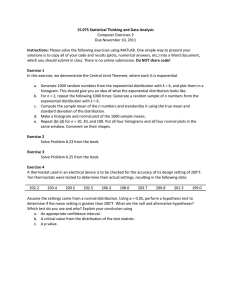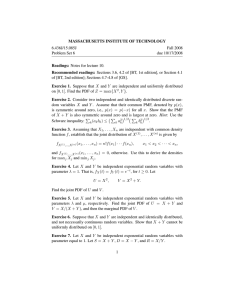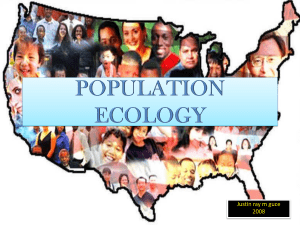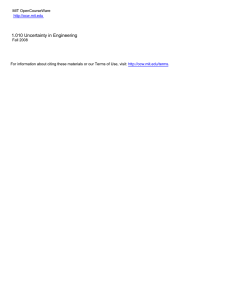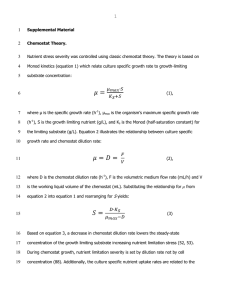Lectures 13,14 Population Growth: 1.018 – 7.30J 2009
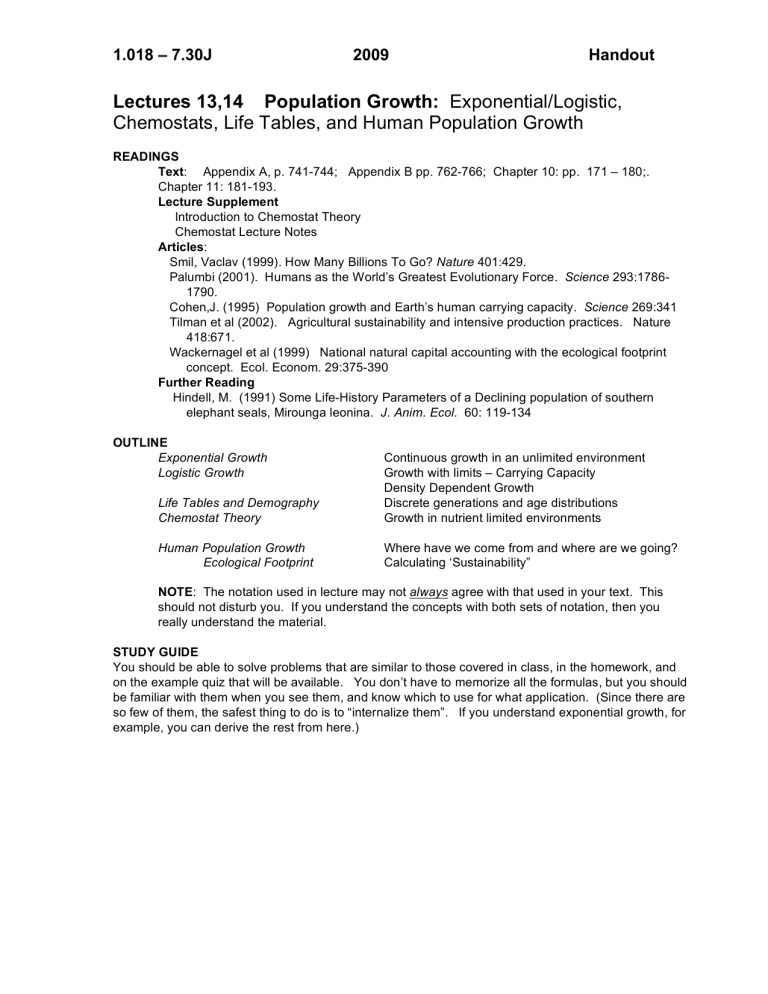
1.018 – 7.30J 2009 Handout
Lectures 13,14 Population Growth: Exponential/Logistic,
Chemostats, Life Tables, and Human Population Growth
READINGS
Text : Appendix A, p. 741-744; Appendix B pp. 762-766; Chapter 10: pp. 171 – 180;.
Chapter 11: 181-193.
Lecture Supplement
Introduction to Chemostat Theory
Chemostat Lecture Notes
Articles :
Smil, Vaclav (1999). How Many Billions To Go? Nature 401:429.
Palumbi (2001). Humans as the World’s Greatest Evolutionary Force. Science 293:1786-
1790.
Cohen,J. (1995) Population growth and Earth’s human carrying capacity. Science 269:341
Tilman et al (2002). Agricultural sustainability and intensive production practices. Nature
418:671.
Wackernagel et al (1999) National natural capital accounting with the ecological footprint concept. Ecol. Econom. 29:375-390
Further Reading
Hindell, M. (1991) Some Life-History Parameters of a Declining population of southern elephant seals, Mirounga leonina. J. Anim. Ecol. 60: 119-134
OUTLINE
Exponential Growth
Logistic Growth
Life Tables and Demography
Chemostat Theory
Human Population Growth
Ecological Footprint
Continuous growth in an unlimited environment
Growth with limits – Carrying Capacity
Density Dependent Growth
Discrete generations and age distributions
Growth in nutrient limited environments
Where have we come from and where are we going?
Calculating ‘Sustainability”
NOTE : The notation used in lecture may not always agree with that used in your text. This should not disturb you. If you understand the concepts with both sets of notation, then you really understand the material.
STUDY GUIDE
You should be able to solve problems that are similar to those covered in class, in the homework, and on the example quiz that will be available . You don’t have to memorize all the formulas, but you should be familiar with them when you see them, and know which to use for what application. (Since there are so few of them, the safest thing to do is to “internalize them”. If you understand exponential growth, for example, you can derive the rest from here.)
SOME QUESTIONS TO THINK ABOUT
−
Is the human population in “exponential growth”? Why or why not?
−
Considering the growth of a microorganism, what is similar and different between growth in batch culture (Logistic growth) and a chemostat?
−
What are the assumptions of the Logistic Growth Model?
−
How does age of first reproduction of females influence population growth rates?
−
What is the explicit definition of the “Carrying Capacity” of the Earth for humans?
Why is it so difficult to estimate?
− How is the “ecological footprint” of a person or country calculated? What is the
“ecological capacity” of a country?
LIFE TABLE TERMS AND EQUATIONS x = age l n x x
= number of individuals surviving to age x
= age-specific survivorship
= proportion of individuals surviving to age x
= n x
/n o
= number dying during the age interval x to x+1 d x q x
= age-specific per capita mortality rate
= proportion of individuals dying between age x and x + 1
= (l x
= d x
– l x+1
/n x
)/l x
“age class x” = all the individuals between age x and x + 1 e x
= life expectancy of individuals of age x = T x
/ n x
T x
= total years to be lived by individuals of age x in the population
=
"
# x
L x
L x
= number of individuals alive on average during the age interval x to x+1
= (n x
+ n x+1
)/2
!
b x
= age-specific fecundity
= average number of offspring produced per individual between ages x and x + 1
R o r
= net replacement per generation
= Σ (l x b x
)
= intrinsic rate of increase exact solution: Σ (l x b x e
–rx
) = 1 approx. solution: r ≅ (ln R o
) / G where G = mean generation time
≅ { Σ (x l x b x
) } / R o
MIT OpenCourseWare http://ocw.mit.edu
1.018J / 7.30J Ecology I: The Earth
Fall 200
9
For information about citing these materials or our Terms of Use, visit: http://ocw.mit.edu/terms .

